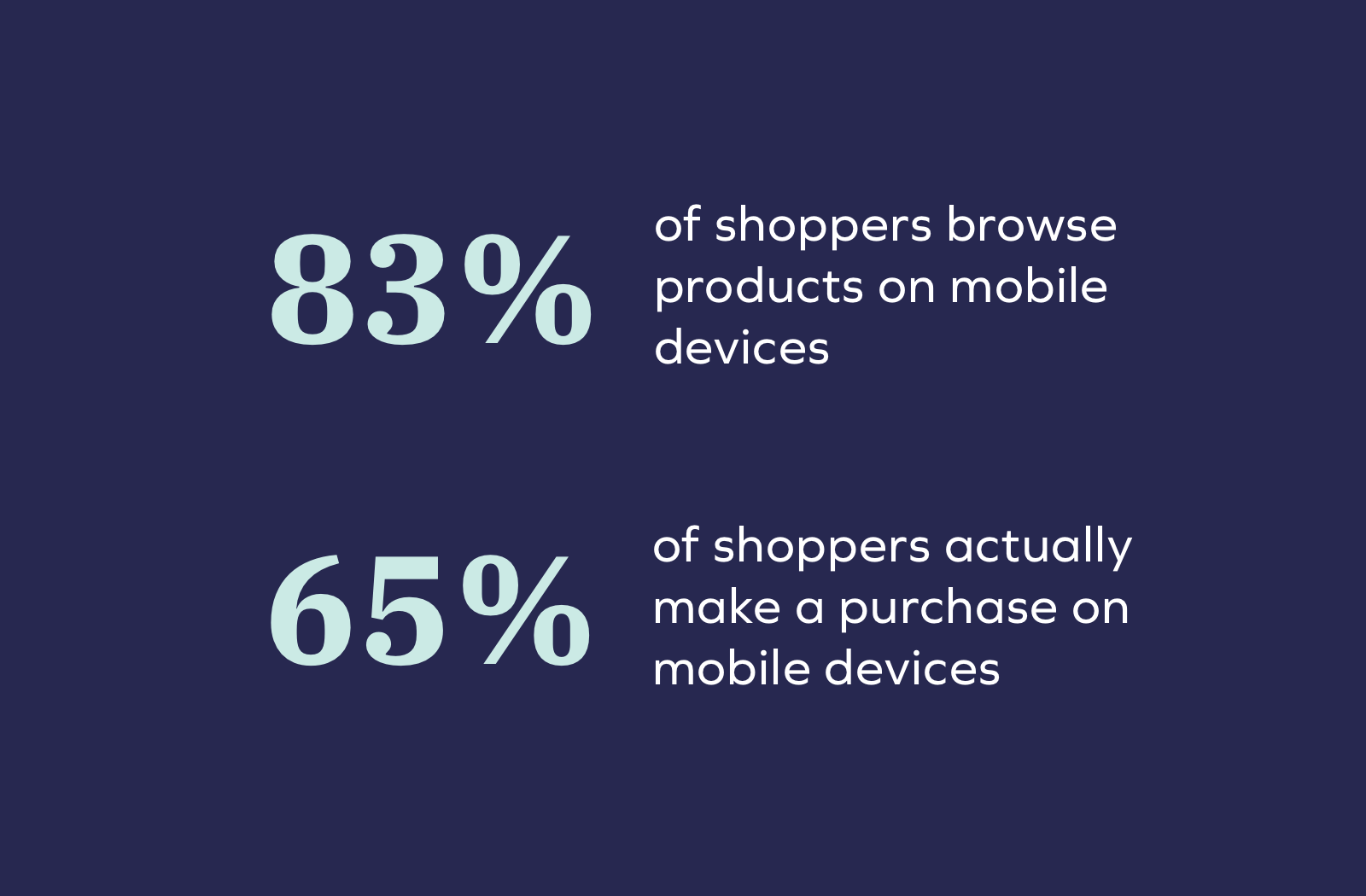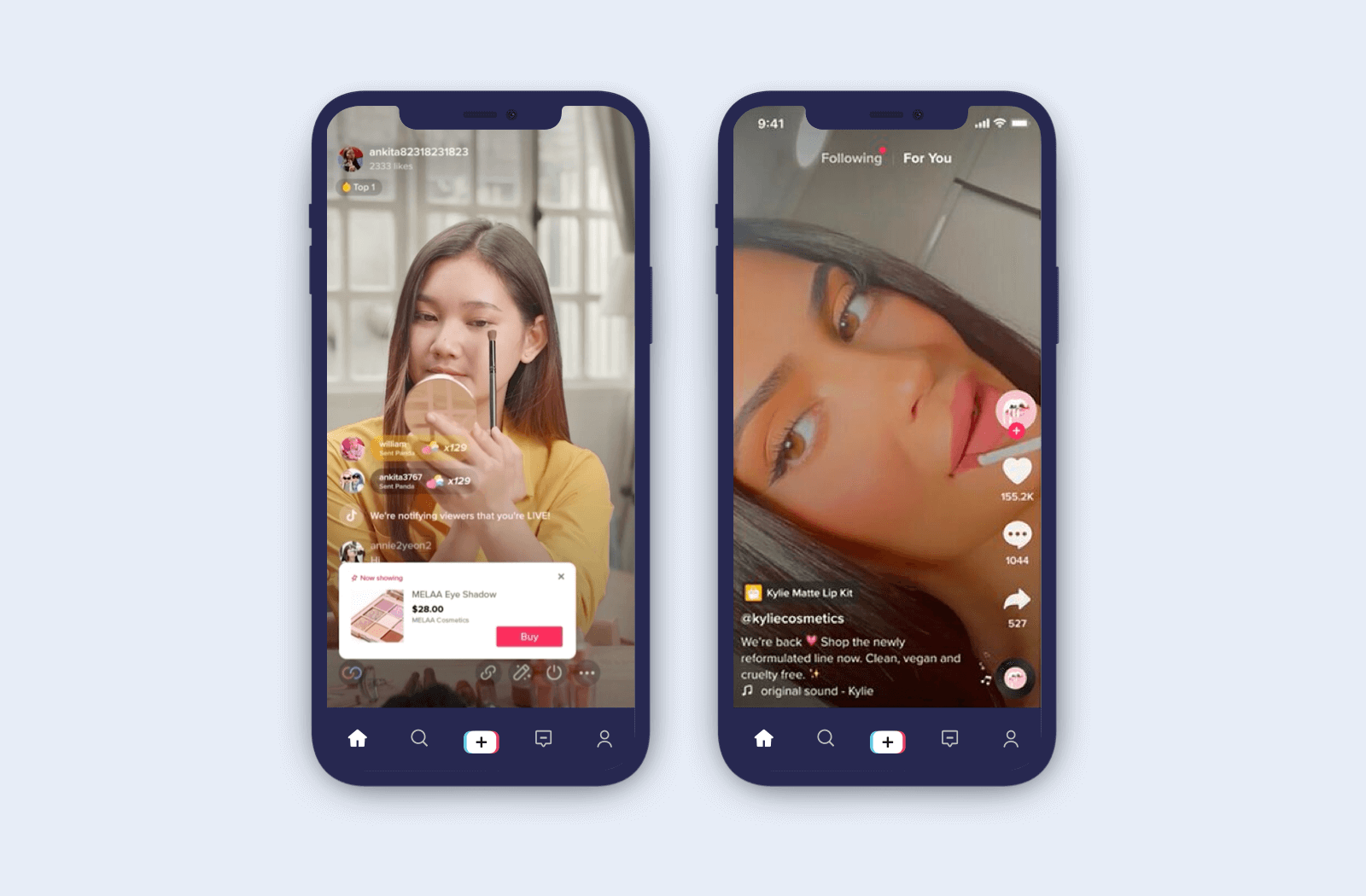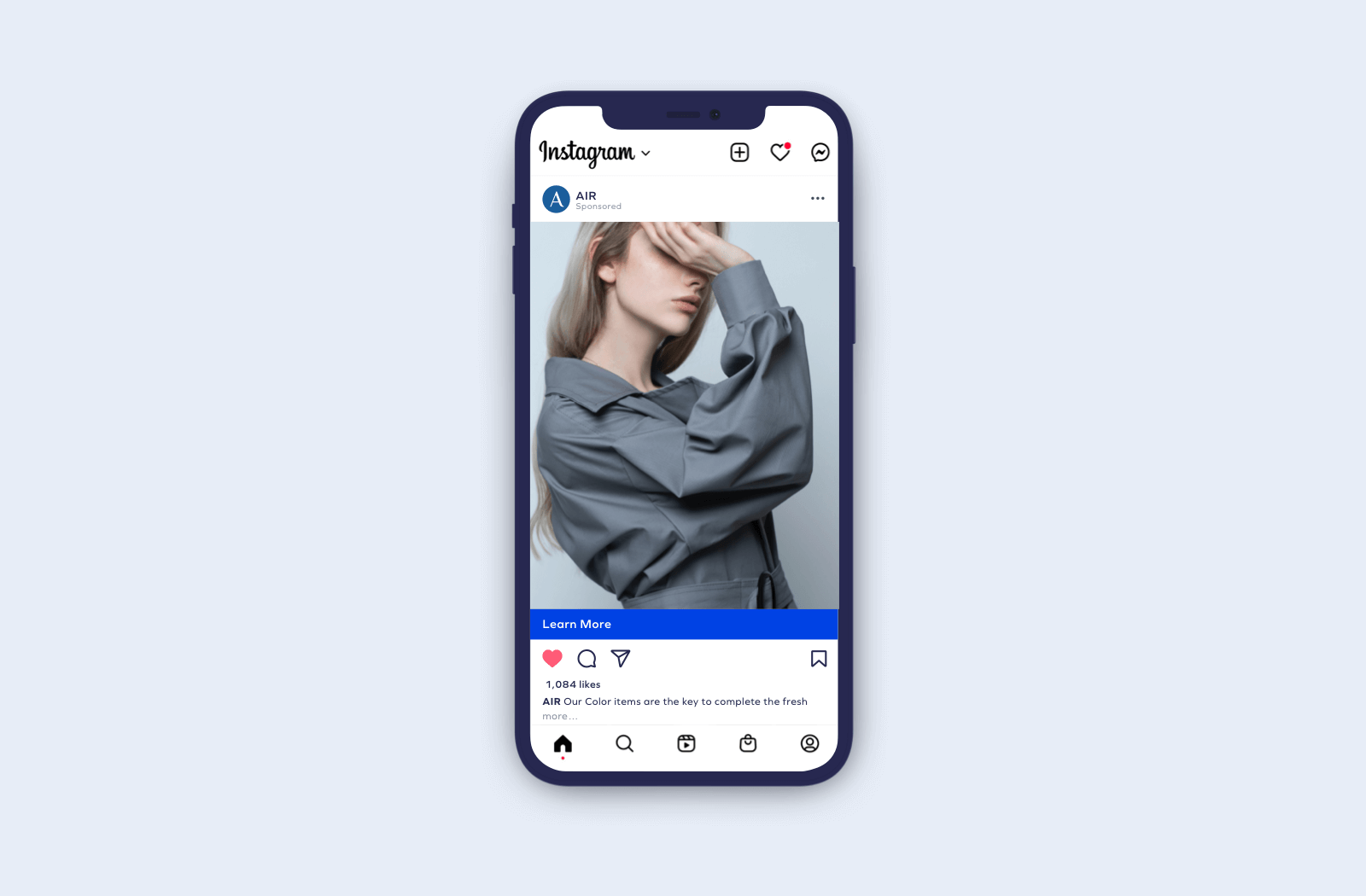Capturing Attention With Mobile Advertising
Get in front of consumers and hook their interest with these mobile advertising best practices, from mobile-first ad design to creating connections through video.
 The Mobile Commerce Guide
The Mobile Commerce Guide
Get in front of consumers and hook their interest with these mobile advertising best practices, from mobile-first ad design to creating connections through video.
If you spent a good amount of time last year glued to your phone — whether watching endless clips on TikTok, doom-scrolling, or online shopping — you weren’t alone.
Researchers estimate that US adults spend a whopping 4 hours 6 minutes per day on their mobile devices. That number feels impossible until you go and take a look at your own “screen time” page on your phone, *gulp*.
With smartphone adoption and mobile usage at an all-time high, it makes sense that companies are increasing their mobile advertising ad budgets more than ever before. In 2022, mobile advertising spending was expected to reach a record of $327.1 billion U.S. dollars worldwide. This is an increase of 17.2% compared to the previous year, and according to the latest data, spending will amount to nearly $400 billion by 2024.
Furthermore, mobile is an extra-attractive digital ad channel due to mobile devices and apps offering great targeting and personalization opportunities — a requirement for brands today to stay competitive. According to McKinsey’s Next in Personalization 2021 Report, 71% of consumers expect companies to deliver personalized interactions, and 76% get frustrated when this doesn’t happen. With mobile advertising, you can more effectively appeal to the masses.
We know that shoppers will commonly browse for products on their phones but make the final purchase on their desktop. In fact, 83.3% of US adults will research on mobile but only about 65.2% will actually make a purchase on a mobile device — leaving lots of products in carts. This contributes to the 70% cart abandonment rate we’ve consistently seen over the last few years.
To close the gap between browsing products and making purchases at your store, mobile retargeting can be used to send highly targeted ads to those high-intent shoppers. These ads can automatically pull in the exact product your shopper was eyeing through your eCommerce platform’s product feed.
Better yet, pair those retargeting ads with perfectly sequenced cart abandonment emails to see customers convert 2x faster and 2x more often (compared to ads alone). AdRoll customer, RIGd Supply, saw a 45x ROAS (return on ad spend) by using our Abandoned Cart Recovery recipe across email, desktop, and mobile ads.

When Facebook launched us into the world of social media in 2004, it was created for desktop, only because the smartphone (as we know it) didn’t exist yet. But over the past 19 years, social media platforms have made a dramatic shift to mobile, especially for the fastest-growing social media apps like TikTok and Instagram. Even boomer-favorite, Facebook, is accessed on mobile only by nearly 82% of their users.
These mobile-first platforms have been serving up headaches and heartaches to store owners and marketers as they move closer to pay-to-play models, reducing the visibility of brands’ organic content. The average reach of an organic post on a Facebook page now hovers around 5.2%.
While this organic reach isn’t likely to increase in the future, mobile ads can be used to counteract the engagement deficit that eCommerce brands are seeing.
In the US, eCommerce sales are expected to grow by 50 percent ($907.9B to $1,364.7B) between 2022 and 2025, so it’s no wonder that everyone is trying to cater to brands. Even social media platforms are creating new types of mobile ads specifically for eCommerce stores. In August 2022, TikTok launched Video Shopping Ads, Catalog Listing Ads, and Live Shopping Ads to make it easier for brands to advertise on their platform.
In that release, TikTok revealed that 56% of users say ads on TikTok lead them to discover new products or brands, according to a global research study conducted with Material.

Your ads are far more likely to be viewed on mobile, so design all ad creative as mobile-first. If you do decide to adapt your ads for desktop, it’s much easier to take your mobile ads and expand for desktop than to design the other way around. So what does mobile-first design look like?
While mobile ads on social media can be effective on their own, we strongly suggest aligning and giving equal attention to both your paid and organic social media strategies. Your existing and prospective customers want to see consistency and visibility everywhere they interact with you.
It can also help you make your marketing dollars go even further by using organic social and other marketing efforts to determine which content is most popular with your audience before running it as a promotion. Instead of wasting time experimenting with your paid social advertising campaigns, experiment with organic social, email campaigns, and other no- or low-cost methods, and use the winners for paid social ads and promotions.

Video is a great way to create an emotional connection with your audience, and it’s also one of the most engaging forms of content, catching the users attention with both movement and sound.
MediaMind analyzed over 3 billion ad impressions for six months and found that prospects are 27.4x more likely to click through online video ads than standard banners and almost 12x more than rich media ads.
When you do put together your video, here are a few things to keep in mind:
So you have an amazing, highly clickable ad, but then the shopper lands on a page of your store that was clearly created with desktop in mind, forcing them to pinch and scroll. Let’s avoid that frustrating user experience by pairing your winning mobile ads with great mobile landing pages that:
More than ever, shoppers are spending their time browsing product catalogs and adding items to their carts on mobile devices, but they’re also engaging with brands on social media, reading reviews, and our personal favorite, clicking on ads. Get in front of this growing population by setting up your display, native and social media ad campaigns all in one place and make them all work together by using the AdRoll marketing and advertising platform.
AdRoll is a marketing and advertising platform that helps eCommerce brands grow revenue and save time on one streamlined platform. Make web ads, social ads, and email work together and more effectively run, measure, and optimize your marketing efforts. Powered by industry-leading automation and personalization, the AdRoll platform’s machine learning analyzes real-time advertising data to drive traffic and sales. AdRoll helps customers generate more than $246 billion in sales annually and has been used by over 140,000 brands since 2006. www.adroll.com
